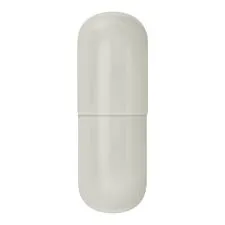
nov . 06, 2024 03:07 Back to list
Solubility Properties of Hydroxypropyl Methyl Cellulose in Various Solvents
Understanding Hydroxypropyl Methylcellulose Solubility
Hydroxypropyl methylcellulose (HPMC) is a versatile cellulose derivative that has gained widespread popularity across various industries, particularly in pharmaceuticals, food, and construction. Its unique properties, such as film-forming ability, thickening capacity, and water retention, make it an invaluable ingredient in many applications. However, understanding the solubility of HPMC is crucial for its effective utilization in formulations.
Chemical Structure and Properties
HPMC is synthesized from cellulose through a series of processes that involve the etherification of cellulose with propylene oxide and methyl chloride. This modification results in a compound that possesses both hydroxypropyl and methyl groups, which significantly alters its chemical and physical properties. The solubility of HPMC in water is primarily influenced by its degree of substitution (DS) and molecular weight. Generally, HPMC is known for its ability to dissolve in cold water, forming a clear, viscous solution, making it unique among cellulose derivatives.
Solubility Profiles
The solubility of HPMC is not uniform and can vary based on several factors
1. Degree of Substitution (DS) HPMC with a higher degree of methyl substitution tends to have lower solubility in water. On the other hand, increased hydroxypropyl content enhances solubility. The right balance between these two substitutions must be achieved to optimize solubility for specific applications.
2. Molecular Weight HPMC comes in various molecular weights ranging from low to high. Generally, lower molecular weight HPMC dissolves more readily in water than its higher molecular weight counterparts. This characteristic is essential to consider when selecting HPMC grades for different formulations.
3. Temperature The solubility of HPMC is influenced by temperature, with higher temperatures often promoting better dissolution. This factor is particularly important in processes like hot water extraction or during cooking in food applications.
hydroxypropyl methyl cellulose solubility

Application in Pharmaceuticals
In the pharmaceutical industry, HPMC is primarily used as a binder, film-forming agent, and controlled-release agent in tablet formulations. Its solubility properties are critical; for example, in controlled-release formulations, the rate of drug release is often tailored by selecting the appropriate HPMC grade. A well-solubilized HPMC ensures that the active ingredients are released at a consistent rate, enhancing the therapeutic effect while minimizing side effects.
Moreover, in gel formulations, the solubility of HPMC allows it to form a stable gel network that can encapsulate active pharmaceutical ingredients. The viscosity of the gel can be adjusted by varying the concentration and molecular weight of HPMC, providing formulators with an effective tool for achieving desired product attributes.
Role in Food Industry
In the food industry, HPMC serves multiple functions, including as a thickener, emulsifier, and stabilizer. Its solubility characteristics contribute to achieving the desired texture in food products such as sauces, dressings, and bakery items. HPMC helps retain moisture, prolonging shelf life while maintaining the quality of food products. For instance, in gluten-free baking, HPMC can simulate the structural properties of gluten, improving the texture and mouthfeel of baked goods.
Construction and Building Materials
Beyond pharmaceuticals and food, HPMC is also widely employed in construction materials. It is used in tile adhesives, mortars, and plasters, where its water retention and solubility properties make it essential for enhancing workability and adhesion. HPMC ensures that these materials remain workable for an extended period, allowing for proper application without compromising performance.
Conclusion
The solubility of hydroxypropyl methylcellulose is a fundamental property that influences its functionality across various applications. By understanding the factors that affect its solubility, manufacturers can tailor the use of HPMC to meet specific needs, whether in pharmaceuticals, food production, or construction. As industries continue to evolve, the demand for effective and versatile materials like HPMC is likely to increase, making knowledge of its solubility even more relevant. By leveraging the unique properties of HPMC, formulators can achieve innovative solutions that enhance product performance and quality.
-
tile-bonding-additives-for-stronger-bonds
NewsAug.22,2025
-
construction-grade-rdp-for-wholesale-needs
NewsAug.22,2025
-
trusted-wholesale-hec-partners
NewsAug.22,2025
-
hec-solutions-for-industrial-excellence
NewsAug.22,2025
-
construction-additives-need-hpmc-essentials
NewsAug.22,2025
-
hpmc-versatile-cellulose-ether-for-industries
NewsAug.22,2025







